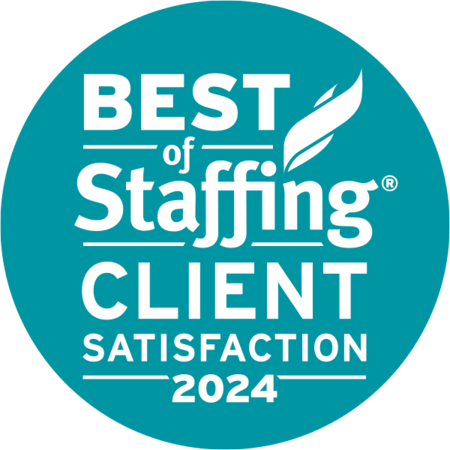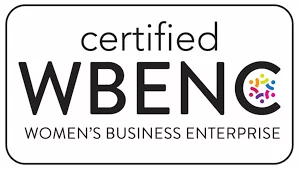Experiencing peaks and dips in job satisfaction is normal for employees across any industry. At some point in your career, you may start to feel unfulfilled in your current role after experiencing limited growth opportunities, a lack of autonomy, or frustration with a supervisor. It’s natural to think the grass is greener somewhere else during these times and to contemplate a job search.
As we reported in the ARG Quarterly Barometer last month, the employment market remains strong for skilled Accounting and Finance professionals. Your skills and expertise are in high demand, and open positions are plentiful. So if you are feeling the itch, now might be a good time to look. However, you must have a well-planned strategy that goes beyond simply submitting applications.
A comprehensive job search involves thorough planning, assessment, and evaluation — even before updating your resume.
Taking a career inventory helps clarify thinking, uncover the truth behind pain points, and identify your non-negotiables. This exercise is the first step in determining how your current position stacks up against new opportunities.
Whether you’re a few years into your profession or an expert seeking a career change, we’ll walk you through the key steps to conduct a thorough job search and provide tips and insights to help you take control of your career journey.
Identify Pain Points in Your Current Position
When you’ve reached a point of dissatisfaction in your current job, it is imperative to take a step back and assess your employment situation. By identifying the specific issues causing your dissatisfaction, you gain clarity on what you need and want from your career. This self-reflection helps you revisit, and perhaps refine, your goals and values.
To identify your challenges, start by asking yourself these questions:
- What aspects of my current job do I find unfulfilling or frustrating?
- Are there limited opportunities for growth, advancement, or skills development?
- Do I feel underpaid or undervalued for my contributions?
- Is the work-life balance unsustainable or affecting my well-being?
- Do the company culture or values clash with my own beliefs and work style?
- Are my job duties repetitive or failing to utilize my full potential?
- Do I have a strained relationship with my boss, coworkers, or subordinates?
- Am I given enough autonomy to perform my job effectively?
- Does my current role align with my long-term career goals and aspirations?
As you answer these questions, be specific and honest with yourself. It’s important to differentiate between temporary challenges and fundamental issues that are unlikely to change within your current organization.
Once you’ve identified your primary pain points, rank them in order of importance. This prioritization helps focus your most pressing needs and concerns. Keep in mind that no job is perfect, and there may be trade-offs to consider. However, by clearly understanding your dissatisfaction, you can make more informed decisions and increase your chances of improving your current role or finding a more fulfilling career opportunity.
Define Your Non-Negotiables
Once you’ve identified the challenge areas of your current position, it’s time to translate those insights into a clear set of non-negotiables: the essential criteria that a new role must meet for you to consider the opportunity a good fit. By defining these upfront, you can determine if improvements might be possible with your current employer or if it’s time to kick off a search:
- Career growth and development
- Job responsibilities and challenges
- Company culture and values
- Compensation and benefits
- Work-life balance
- Location and commute
- Industry and company size
When creating your list, be realistic and flexible. While it’s important to have standards, being too rigid may limit your opportunities. Prioritize your criteria based on importance of your overall job satisfaction and well-being.
For example, if work-life balance is a top priority for you, you may be willing to accept a slightly lower salary in exchange for more flexible hours. On the other hand, if career growth is your primary focus, you may be willing to take on a longer commute for a role that offers significant advancement potential.

Assessing Your Current Role: Can It Be Improved or Is It Time to Move On?
Armed with a clear understanding of what you are unwilling to compromise on, it’s time to assess whether your current role can be improved or if it’s time to start a job search. Before making a decision, it’s important to have an honest conversation with your manager or human resources representative to discuss your concerns and explore potential solutions.
Clearly articulate the specific changes you would like to see in your current role. Use specific examples and focus on solutions rather than complaints. Listen to your manager’s perspective and be open to feedback on your performance and how you can contribute to improving the situation. Then, collaborate with your manager to brainstorm potential solutions that address your requests while meeting the needs of the organization. This may include changes to your job responsibilities, additional support or resources, or professional development opportunities.
If your manager agrees to make changes, set a timeline for implementation and follow-up. This will help ensure that the agreed-upon solutions are put into action in a timely manner.
After the conversation, take some time to reflect on the outcome. If your manager is receptive to your concerns and willing to work with you to make meaningful changes, it may be worth giving your current role another chance. However, if you feel that your pain points cannot be adequately addressed or if your non-negotiables are fundamentally misaligned with your current employer, it may be time to start looking.
When making this decision, also consider the history of change within the organization. If you’ve previously raised concerns with your manager or human resources and have seen little to no improvement, it may be a sign that change is unlikely in the future.
Conducting a Targeted Job Search
Now that you’ve determined it’s time to seek new opportunities, it’s essential to conduct a job search based on your career objectives. A targeted approach will help you focus your efforts on opportunities that have the greatest impact on job satisfaction and long-term success.
Evaluate Job Descriptions: When reviewing job descriptions, carefully assess how well they align with your goals and career objectives. Look for red flags, such as vague language around advancement opportunities or a lack of emphasis on professional development and growth.
Research Prospective Employers: As you begin applying for new positions, make sure to research the companies you’re interested in. Investigate the organization’s mission, values, financial health, and reputation within the industry. Seek out insights from current and former employees to get a sense of the day-to-day work experience and company culture. The more informed you are about a potential employer, the better equipped you’ll be to determine whether it’s the right fit for you.
Evaluate Compensation and Benefits: It’s essential to look beyond the base salary. Consider the total compensation package, including bonuses, stock options, retirement contributions, and health insurance. Also, think about non-monetary benefits like vacation time, flexible working arrangements, or professional development opportunities. While a higher salary is certainly attractive, it’s important to ensure that the overall package aligns with your priorities and long-term financial goals.
Assess Growth Potential and Career Trajectory
One of the most crucial factors to consider when evaluating a new job offer is the potential for growth and advancement within the organization. During the interview process, ask about the company’s performance review structure, internal promotion policies, and opportunities for skill development. Consider whether the role aligns with your long-term career aspirations and if there is a clear path for progression within the company.
Compare Company Culture and Work Environment
Beyond the tangible aspects of a job offer, it’s equally important to assess whether the company culture and work environment align with your values and preferences. Consider factors like the level of autonomy and creativity in the role, the team dynamics, and the overall office atmosphere.
Trust Your Instincts
Ultimately, when deciding between staying in your current role or accepting a new offer, it’s essential to trust your instincts. If a new opportunity feels like the right move for your career, even if it involves some short-term sacrifices or uncertainties, it may be worth taking the leap. On the other hand, if you have reservations about a potential employer or feel that staying in your current role is the better choice for now, don’t be afraid to pass on an offer.
Take the time to reflect on the factors that have led you to seek new employment and be honest with yourself about what you’re looking for in your next role. The goal of any job search should be to find a position that not only meets your immediate needs but also sets you up for long-term career satisfaction and success. By carefully evaluating new opportunities against your current role and prioritizing your non-negotiables, you can make an informed decision that aligns with your professional goals and personal values.
Considering a career transition? Alliance Resource Group can help.





